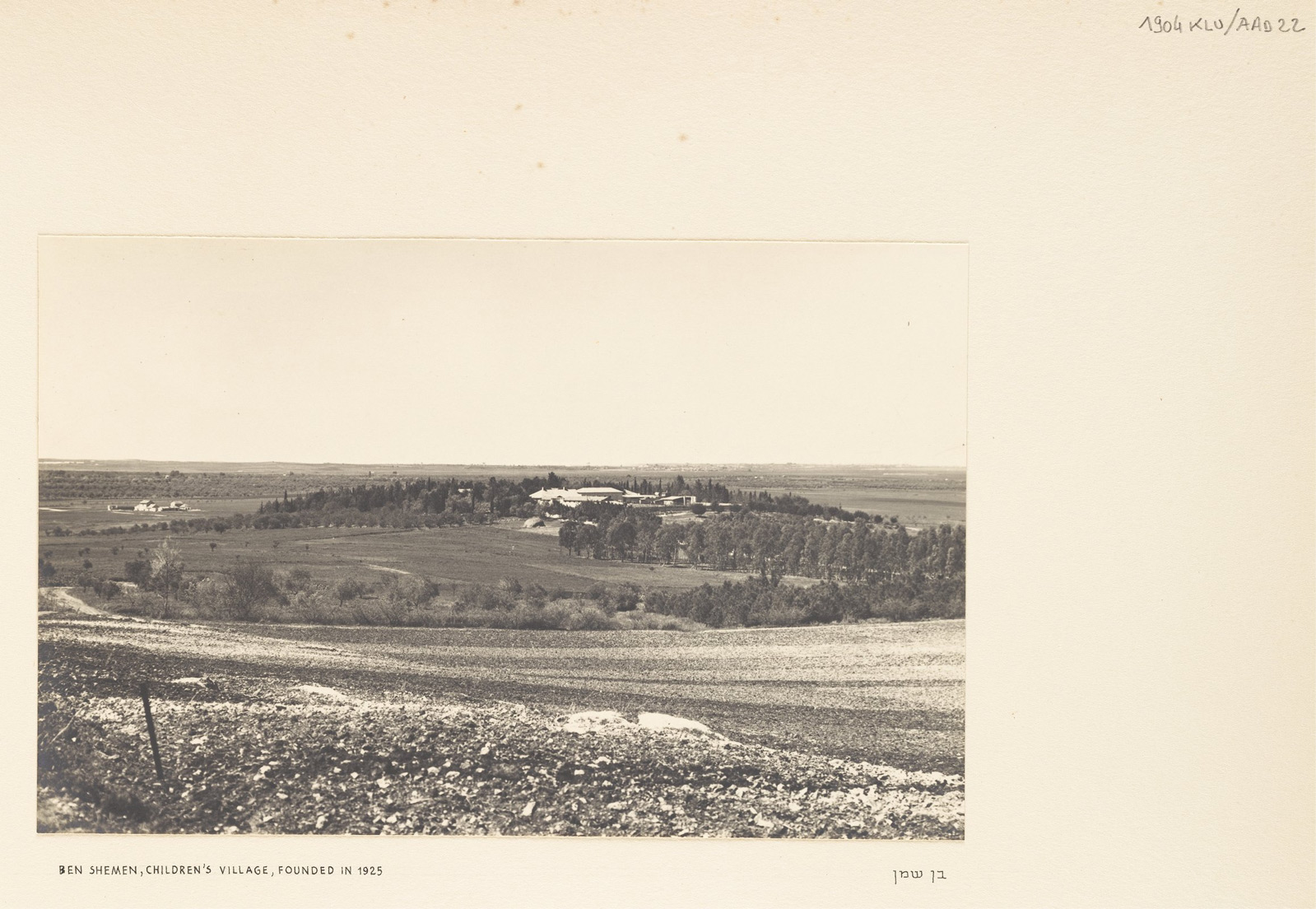The “youth village” Ben Shemen was designed to be a “home away from home” for Jewish teenagers who had recently immigrated to Mandate Palestine without their parents. The founders, Dr. Siegfried Lehmann, envisioned a new model of national education, which shapes individual and national identity through life and work in the rural landscape of the homeland.
At first glance, Zoltan Kluger’s photograph of Ben Shemen seems to be off the mark. Not only that the caption is wrong (the village was founded in 1927, not 1925), but the photograph also shows no sign of the features that distinguished the place from other educational institutions: e.g., the children who lived without a family in Palestine; their work in the fields; and the cultural programs that were integrated with the school curriculum. These aspects of the village were indeed underscored in various other photographs and films that documented it in the 1930s and 1940s. Yet Kluger’s image does capture the essence of Lehmann’s vision and understanding of the school. Located on the hill, surrounded by fields and a forest, the village is interwoven into the landscape while towering above it. Compared with the fields, the darker shade of the trees around the school simultaneously indicates the connection with the natural landscape and distinguishes the village from its surrounding. Simply put, in line with Lehmann’s intention, Kluger conceived Ben Shemen as an emblem of a Jewish Heimat: namely, the place that constitutes and displays the authentic bond between a people and its organic, national landscape.
